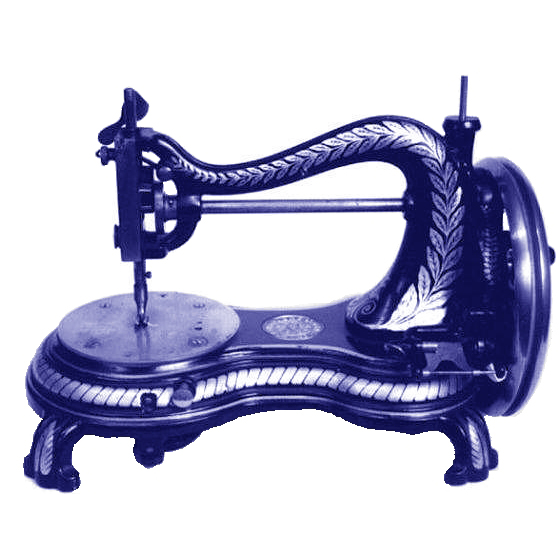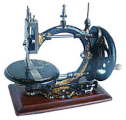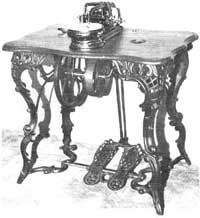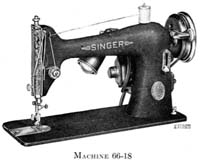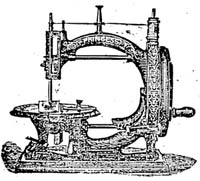Class 185
A Stitch in Time: the Singer 185 Story
The Brief But Brilliant Reign of Singer's Midcentury Marvel

A true Midcentury Marvel
The Singer 185 (1958-1963) features distinctive mid-century styling in a compact 3/4-sized frame. This straight-stitch portable combines proven 99 mechanics with modern aesthetics, using standard 15x1 needles and Class 66 bobbins.
In the pantheon of Singer sewing machines, some models enjoy decades-long production runs while others flash briefly across the sewing landscape. The Singer 185 falls into the latter category—a shooting star in Singer's lineup that appeared in 1958, shone brightly for approximately five years, and disappeared by mid-1963. Despite its short production window, this distinctively styled machine has secured a lasting place in the hearts of sewing enthusiasts and collectors.
Beauty in Miniature
What immediately strikes observers about the 185 is its compact footprint. Neither a full-sized workhorse nor a specialty lightweight, the 185 inhabited the sweet spot of portability while maintaining substantial sewing capability. This three-quarter scale format made it perfect for sewists with limited space or those needing a machine they could easily transport.
The machine's appearance varied by market. North American consumers welcomed a refreshingly modern machine in two-tone green, complete with a distinctive spotlight-style worklight that cast a focused beam on the sewing area. British customers, meanwhile, received a more subdued tan and brown color scheme from the Kilbowie factory in Scotland.
A Global Effort
Singer's international manufacturing network produced the 185 in three primary locations, each adding its distinctive mark to the model:
- Machines from Kilbowie, Scotland bore the 185K designation
- Canadian-made units from St. Jean-sur-Richelieu carried the 185J marker
- American production lines delivered the standard 185 without a letter suffix
This global approach to manufacturing reflected Singer's position as a true multinational corporation in the late 1950s, with standardized engineering adapted to regional production facilities.
Engineering Philosophy: Proven Foundations
Rather than designing an entirely new machine, Singer's engineers took a pragmatic approach with the 185. They retained the well-established mechanical platform of the Singer 99—a design that had proven its reliability since 1911—and wrapped it in contemporary styling.
This strategy delivered several benefits:
- Manufacturing efficiency through shared components
- Proven reliability from day one
- Compatibility with existing accessories and attachments
- Familiar operation for those upgrading from older Singer models
The 185 incorporated a conventional oscillating hook mechanism, Class 66 drop-in bobbin system, and used standard 15×1 needles—all features that made it immediately familiar to experienced Singer users. The low shank design ensured compatibility with a wide range of presser feet and attachments.
Function Meets Fashion
While the 185's mechanics remained traditional, its housing embraced the aesthetic sensibilities of the late 1950s. The machine's rounded contours, two-tone color schemes, and streamlined appearance reflected the influence of contemporary automotive and appliance design trends.
Most 185s left the factory paired with molded plastic carrying cases—a modern departure from the wooden cases of earlier eras. Though these plastic cases have proven less durable over time, they represented Singer's embrace of new materials during this transitional period in consumer products.
A fortunate consequence of maintaining the 99's base dimensions meant that the 185 could easily fit into existing cabinets and wooden cases designed for the 99. This backward compatibility has proven particularly valuable for today's collectors dealing with deteriorating plastic cases.
Unexpected Collectibility
Several factors have elevated the 185 from merely another vintage machine to a sought-after collector's item:
- Its limited production run created natural scarcity
- The distinctive mid-century aesthetic appeals to vintage enthusiasts
- The machine's practical usability combined with display-worthy appearance
- Its position as the last truly traditional Singer portable before more radical redesigns
While most 185 owners appreciate the machine's appearance, they particularly value its mechanical performance. The all-metal gearing and robust construction deliver satisfying stitch formation and durability that contrasts sharply with many modern lightweight machines.
The Shadow of Succession
The 185's relatively short production life ended with the introduction of the 285 model in mid-1963. Though outwardly similar, the 285 represented a significant internal redesign, replacing the 185's proven mechanics with a new rack-and-pinion drive system for the oscillating hook.
This mechanical overhaul proved less successful in practice, with the 285 developing a reputation for inferior performance and reliability compared to its predecessor. This unfortunate comparison has only enhanced the 185's reputation as the last of Singer's classic portable straight-stitch machines before cost-cutting measures began affecting performance.
The 185 Today
Modern sewists drawn to vintage machines find much to appreciate in the 185. Its straightforward mechanics make maintenance simple, with easily accessible oiling points and adjustments. The continued availability of standard needles, bobbins, and compatible low-shank attachments ensures the machine remains practical for everyday sewing.
Those seeking a portable straight-stitch specialist for quilting or precision work often gravitate to the 185 for its smooth operation and consistent stitch formation. The machine's substantial weight provides stability during operation, while its relatively compact size fits easily on modern sewing tables.
Whether collected for its aesthetic appeal, appreciated for its mechanical performance, or valued as a transitional piece in Singer's design evolution, the 185 continues to stitch its way into sewing history—a brief but significant chapter in Singer's century-spanning story.RetryClaude can make mistakes. Please double-check responses.
